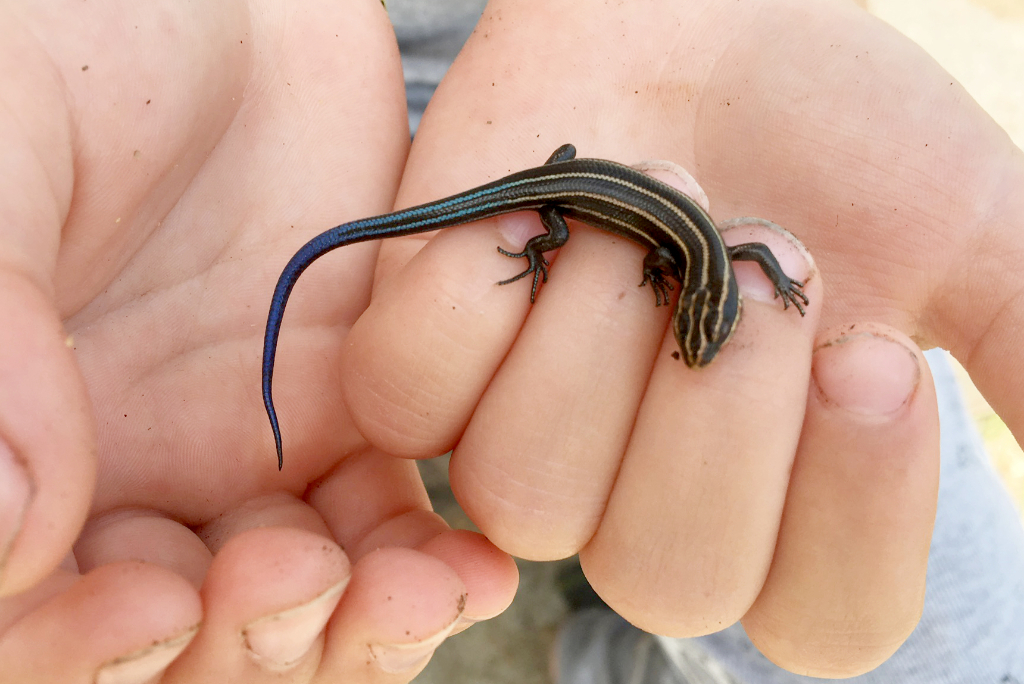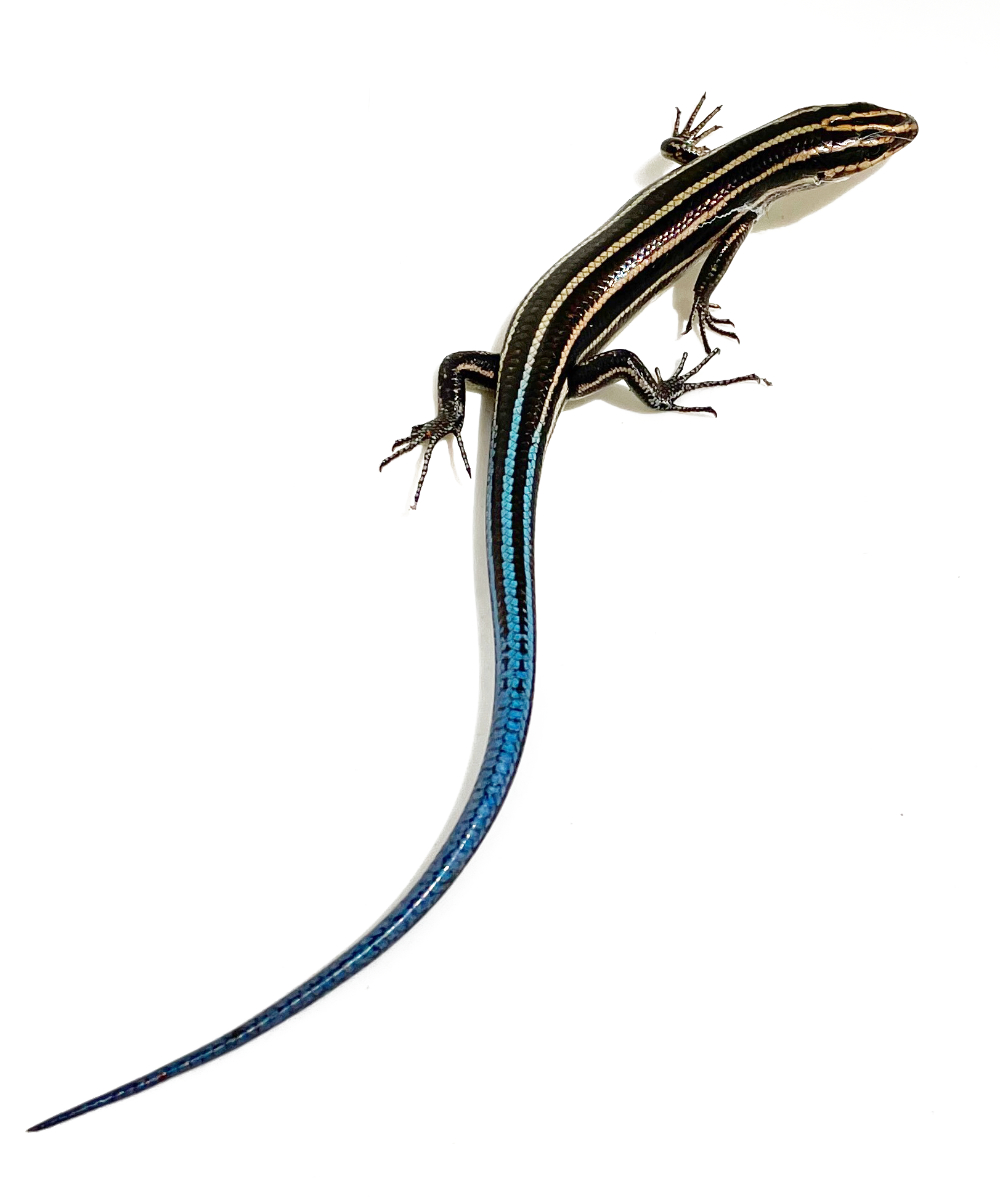
by Eleanor Proctor, Georgian Bay Land Trust
Bayfield-Nares is a special place, beautiful and wild, with the lands and waters home to many fascinating creatures. The common five-lined skink (Plestiodon fasciatus), the only lizard species found in Ontario, is one of them.
Often known as the blue-tailed skink because the juveniles are so vibrant, the five bright yellow stripes and blue tail fade with age. Adults are brown, the males having an orange tinge to their jaws and cheeks. The scales of these skinks are unridged, giving them a smooth and shiny appearance.
All skinks (family Scincidae) have short legs in relation to the length of their bodies, with some species having no legs at all. In the case of the common five-lined skink, short legs in no way limit their movements: they are fast and agile, traits needed to avoid predators.

If caught, however, they have a special defense mechanism known as autotomy, where their tails spontaneously break off and thrash for several minutes. This leaves the predator distracted and perhaps with a small meal but allows the skink to escape — and to grow another tail! The new tail grows back at a rate of about 6mm a week and is fully regenerated in three to four months.
Our skinks are considered habitat specialists as they are mainly found on rock outcrops with loose rock present. They live under rocks and decaying logs where they hunt for insects, worms, and other invertebrates. They also use these sheltered places for their nests — up to 10 eggs are guarded by the female for their six-week development period.
Like many reptiles in Ontario, the skink is a species at risk. The population south of Georgian Bay is endangered, but the shield population is faring better, thanks to lower human population densities and fewer roads.
You can help these creatures in several ways:
Skinks emerge from under their shelters to absorb the warmth of the sun and sometimes even enter buildings to feast on insects and spiders that accumulate on window and porch screens.
Reporting your encounters with any species at risk is a vital tool in monitoring populations and habitat-use. It is an easy and fulfilling way to contribute to the study of the secretive creatures that live among us in Bayfield-Nares.